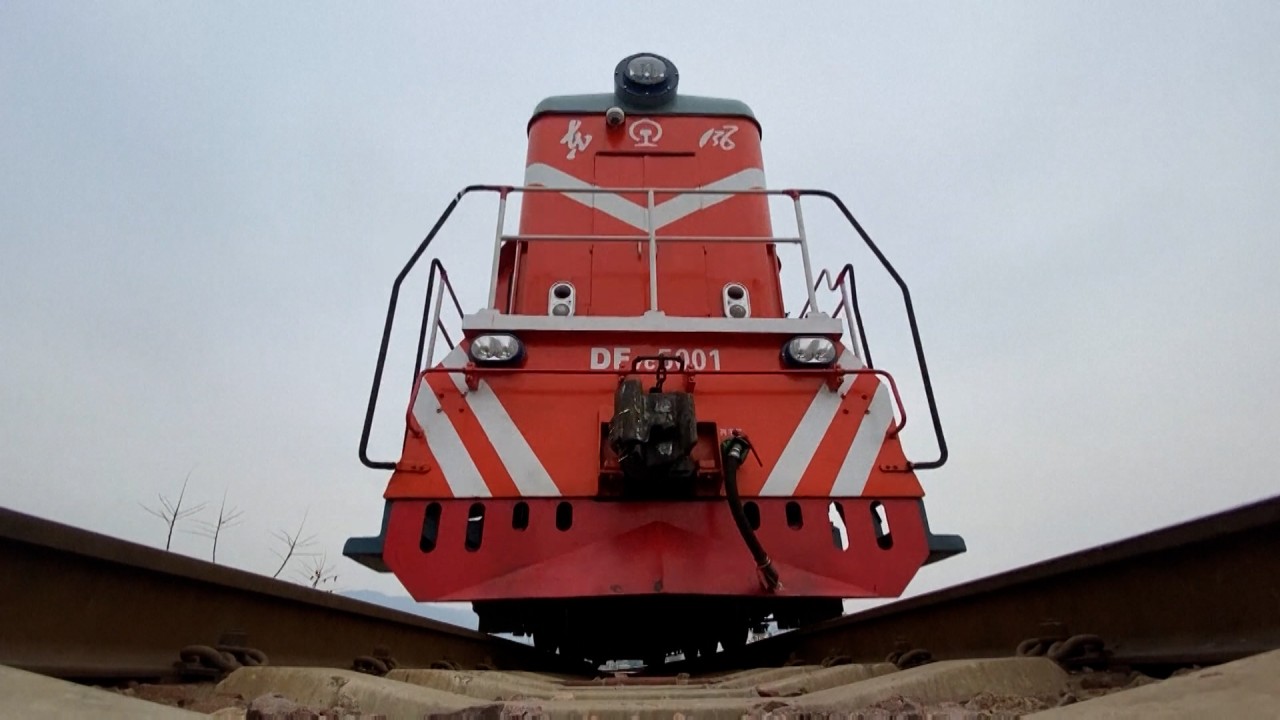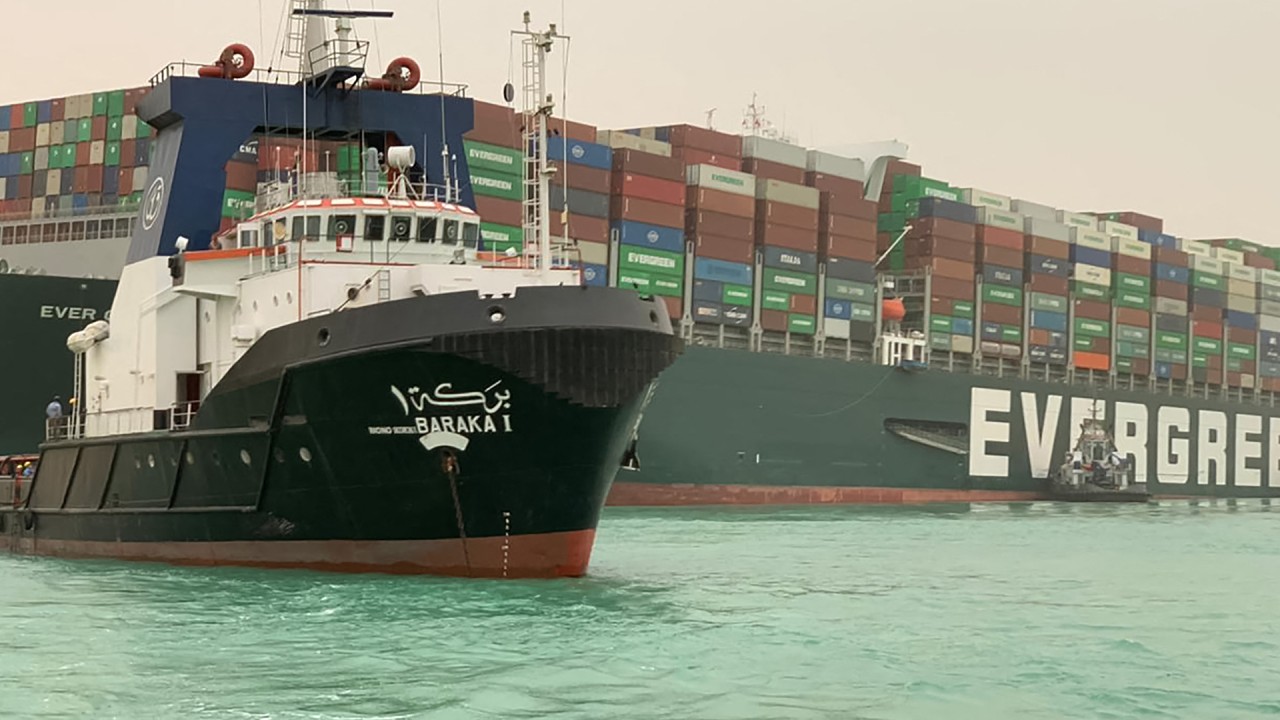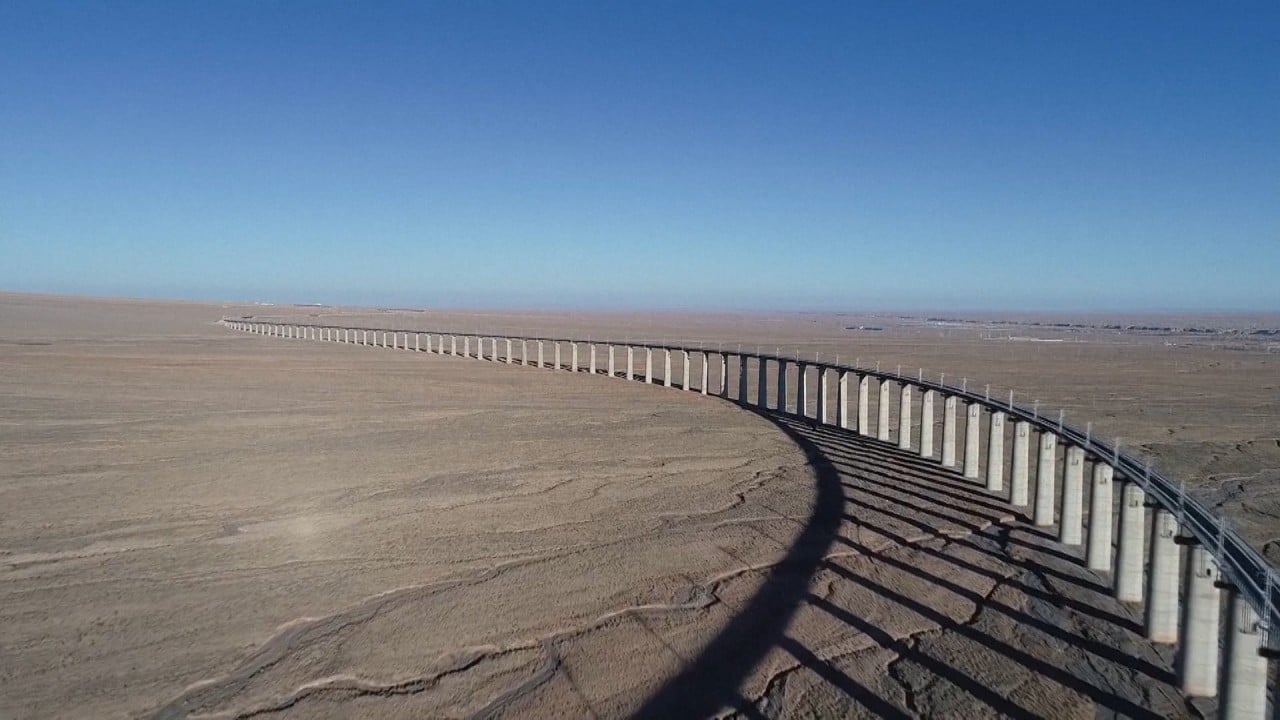
China-Europe rail trade undamaged by Beijing-Brussels tensions, posts record traffic via Xinjiang
- Railway network between Europe and China saw a record number of freight train trips through Xinjiang in the first six months of the year
- Rail line has prospered thanks to soaring sea freight costs and despite worsening relations between the European Union and China
The number of trains entering the country through Alataw Pass, another major rail hub on the Kazakhstan border, increased 41.1 per cent to 3,033 from a year earlier, with cargo volumes rising 56.1 per cent to 2.28 million tonnes of goods.
“The fundamental reason why the China Railway Express is booming is the strong complementarity between China and Europe’s industrial structures,” said Tian Yong, an analyst at Chinese logistics and supply chain analytics firm TUC Media, in a note on Saturday.
“The economic strategic value of the China Railway Express is embodied in the internal circulation of the Eurasia continent … connecting a huge population and a complete range of manufacturing sectors.”
The rail line has prospered despite worsening relations between Beijing and Brussels, which have come under growing strain this year over alleged human rights abuses against China’s ethnic Uygur Muslim minority group in Xinjiang.

01:49
China’s freight trains to Europe hit all-time high amid coronavirus crisis in 2020
Brussels imposed sanctions on Chinese officials accused of human rights violations against Uygurs and the European Parliament suspended the ratification of the Comprehensive Agreement on Investment between the two economies.
Beijing has dismissed those concerns as baseless and returned fire with sanctions of its own.
The belt and road rail service carried an annual record of 12,406 trains last year, propelled by rocketing sea freight fees and surging demand for personal protection products to combat the coronavirus.
Business has continued to boom this year as the global shipping industry has been under strain, with companies in Europe and Asia looking for cheaper freight alternatives.
“There is a limited ocean capacity right now on the eastbound services,” Javier Marin, South West Europe and Maghreb head of intermodal at the Danish shipping giant Maersk, said in a statement last month.
The European company last month sent its first block train of chemicals from Spain to China and said it was considering expanding routes in the future.

01:30
Giant cargo ship causes marine traffic jam by blocking Egypt’s Suez Canal
“This intercontinental block train has been able to stand by its schedule, delivery times and swift transit clearance on time, creating firm ground for further expansion of transcontinental transit,” James Seale, product manager at Maersk, said in the same statement.
Launched in 2011, China Railway Express is part of Xi’s vision to revitalise traditional Silk Road trade routes and strengthen economic ties with Eurasia by boosting connections between China’s manufacturing powerhouses like Zhejiang and Guangdong and European distribution hubs like Hamburg and Duisburg.
In its first decade, the China Railway Express has sent over 40,000 trains, with a total goods value of over US$200 million, operating 73 routes and stopping in more than 160 cities in 22 European countries, according to central government data released in late June.

00:50
China’s new railway makes circular network with Qinghai, Tibet and Xinjiang lines
The data showed Xinjiang has played an important role in the westward-looking development strategy, as the border region has seen more railway traffic passing through it than any other inland port in China.
As a result, Xinjiang’s exports in the first five months of the year reached US$5.96 billion, up 62.3 per cent, while imports fell by 24.9 per cent to US$1.97 billion, according to local customs data.
Last month, imported goods carried by China Railway Express through Khorgos increased 158.6 per cent from a year ago, a monthly record, customs data showed.
Imports during the first half of the year were mainly cars, auto parts, household appliances, raw materials for textiles, wood and food. A growing number of high-value goods such as monitors, laptops, auto parts and electronic components were exported from the region.

